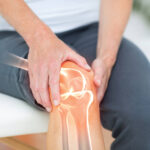Imagine stepping into your bathroom and unknowingly encountering a silent but potentially harmful invader: toxic black mold. Often hidden in plain sight, this insidious fungus can thrive in the damp, humid conditions typical of bathrooms. While a little mold might seem harmless, certain types like toxic black mold (Stachybotrys chartarum) can release dangerous toxins into your environment, posing a serious risk to your health.
Many of us are aware of common mold allergies, but the impact of toxic mold goes far beyond. Symptoms can range from the subtle, such as brain fog and fatigue, to the more severe, like respiratory distress. In this comprehensive guide, we’ll explore the range of health symptoms associated with toxic black mold exposure, how to identify and eliminate this threat from your bathroom, and crucially, when it’s time to seek medical intervention for symptoms that may arise from mold exposure.
Health Symptoms of Toxic Black Mold Exposure:
Exposure to toxic black mold can lead to a variety of health issues, some immediate and others developing over time. Symptoms can vary greatly depending on the duration of exposure, the quantity of mold, and individual susceptibility. Key health symptoms include:
- Neurological Symptoms: These can range from the often-mentioned brain fog and memory loss to more severe neurological deficits, including dizziness, numbness, and tremors.
- Respiratory Problems: Difficulty breathing, wheezing, and coughing are common, but prolonged exposure can lead to more serious conditions such as chronic bronchitis, asthma exacerbations, and bleeding in the lungs.
- Allergic Reactions: Symptoms like sneezing, red eyes, skin rashes, and sinus congestion are typical allergic responses to mold exposure.
- Immune System Suppression: Exposure to mold toxins can weaken the immune system, making the body more susceptible to other infections and illnesses.
- Fatigue and Discomfort: Chronic fatigue, unexplained muscle aches, and joint pain are frequently reported by individuals exposed to toxic mold.
- Severe Health Complications: In extreme cases, prolonged exposure can lead to life-threatening conditions like pulmonary hemorrhage or neurological disorders.
When to Seek a Doctor and Medical Treatment:
If you suspect that you or a family member is experiencing health issues due to mold exposure, it’s crucial to seek medical advice. Here’s when and how to seek help:
- Seek Immediate Attention: If you experience severe respiratory distress, unexplained bleeding, or acute allergic reactions, seek emergency medical care.
- Consult Your Doctor: For chronic symptoms like persistent cough, fatigue, or neurological changes, schedule a visit with your healthcare provider.
- Diagnosis and Treatment: Doctors may perform various tests like blood work, allergy testing, or imaging studies to assess the impact of mold exposure. Treatment can range from allergy medications and inhalers for respiratory symptoms to detoxifying treatments for mold toxin exposure.
- Addressing the Source: Alongside medical treatment, it’s crucial to identify and remediate the mold source in your home to prevent further exposure.
How to Identify Toxic Black Mold:
Identifying toxic black mold, scientifically known as Stachybotrys chartarum, in your home is crucial for maintaining a healthy living environment. This type of mold is particularly insidious and can often be mistaken for harmless household mold. Here’s an expanded guide on how to distinguish toxic black mold:
Appearance: Toxic black mold typically appears as a black or dark greenish-black substance. It can have a slimy texture, especially when it’s exposed to moisture. Unlike other molds, which might have a powdery appearance, black mold is often denser and stickier.
Location: Look for black mold in areas that are prone to moisture and have poor ventilation. Common spots include bathroom walls and ceilings, particularly around leaky pipes or in areas that have experienced water damage.
Odor: A strong, musty, and earthy odor often accompanies black mold. This smell is usually quite noticeable and can help in identifying hidden mold growth behind walls or in other less visible areas.
Patterns of Growth: Stachybotrys tends to grow in a circular pattern. Pay attention to the pattern of the mold; if it’s spreading outwards in a circular formation, it might be an indicator of toxic black mold.
Health Symptoms: If you or family members are experiencing symptoms like chronic coughing, sneezing, irritation of the eyes and skin, or unexplained headaches, especially when in certain areas of your home, this could suggest the presence of toxic mold.
Moisture Issues: Homes with ongoing moisture problems, such as high humidity, condensation, or water leaks, are more prone to mold growth. Identifying and addressing these moisture sources can help in pinpointing potential mold growth.
Professional Testing: If you suspect the presence of toxic black mold but are unsure, it’s advisable to hire a professional mold inspector. These experts can take samples from your home and conduct tests to confirm the type of mold.
Remember: While black mold is a concern, other types of mold can also affect health and should be removed promptly. Always handle mold with caution, using protective gear, and consider professional help for removal, especially for large infestations.
Other Types of Bathroom Mold That Can Cause Health Problems:
Bathrooms, with their moist and warm environments, are prime breeding grounds for various types of mold beyond the notorious black mold. Understanding these different molds is crucial as they can also pose health risks. Here’s a closer look at some other common bathroom molds, their health implications, and how to deal with them.
Aspergillus:
- Characteristics: This mold often appears in a range of colors, including green, yellow, or black, and has a powdery texture.
- Health Risks: Aspergillus is known for causing respiratory problems, particularly in those with weakened immune systems or lung diseases. It can lead to allergic reactions and, in severe cases, lung infections.
- Removal: Regular cleaning with anti-mold products can help prevent Aspergillus growth. For larger infestations, professional remediation may be necessary.
Cladosporium:
- Characteristics: Typically found in both cool and warm areas, it appears as black or olive-green spots.
- Health Risks: Exposure to Cladosporium can trigger asthma attacks, respiratory issues, and allergic reactions such as rashes, coughing, and watery eyes.
- Removal: Clean the affected area with a fungicide or a bleach solution. Ensure good ventilation to prevent its return.
Penicillium:
- Characteristics: Often blue or green, Penicillium can spread quickly in the bathroom.
- Health Risks: It’s known for causing allergies and respiratory issues, such as bronchitis and sinus infections. Long-term exposure can lead to more serious complications like pulmonary inflammation.
- Removal: Scrubbing the affected area with a mold-killing solution can help. Keep the bathroom dry and well-ventilated to deter growth.
Alternaria:
- Characteristics: It has a velvety texture with dark green or brown hairs.
- Health Risks: Alternaria can cause allergic reactions and asthma-like symptoms, particularly in susceptible individuals.
- Removal: Use a mixture of water and vinegar or a commercial mold remover to clean the area thoroughly. Prevent future growth by addressing any leaks and ensuring adequate ventilation.
Aureobasidium:
- Characteristics: Appears pink, brown, or black and often found around showers and window frames.
- Health Risks: Known to cause dermatitis, nail infections, and allergic reactions.
- Removal: Clean the mold with a suitable cleaning agent while wearing protective gloves to avoid skin contact.
Prevention Tips for Bathroom Mold:
Ensure Proper Ventilation: Use an exhaust fan during and after showers or baths to reduce humidity.
Regular Cleaning: Clean your bathroom regularly with mold-inhibiting products.
Fix Leaks Promptly: Repair any plumbing leaks as soon as they’re noticed.
Use a Dehumidifier: If your bathroom remains humid, a dehumidifier can help reduce moisture levels.
Seal Grout Lines: This can prevent mold growth in the crevices of tiles.
Conclusion: Mold in the bathroom, regardless of the type, can pose health risks and should be addressed promptly. Regular cleaning and maintaining a dry environment are key to preventing mold growth. If you experience persistent health issues and suspect they might be related to mold exposure, it’s important to consult a healthcare professional. Additionally, consider hiring a mold remediation specialist for severe infestations to ensure safe and effective removal.








